Occupational environment monitoring at a pet food manufacturing factory
99,000 ₫
Note: The above price is calculated for one sample, and the price may fluctuate depending on the area of the environment to be monitored and market movements. For more accurate pricing support, please refer to the price list or contact our consulting staff directly.
Monitoring the environment of a pet food production factory is a session of collecting, analyzing, and evaluating workplace factors that may be harmful to workers’ health.
Table of Contents
Toggle1. Overview of Pet Food Manufacturing Factory
a. What is a pet food manufacturing factory?
Factory manufacturing pet food is an industrial facility specializing in producing food and related products for pets, including dogs, cats, ornamental birds, rabbits, fish, and others. This factory operates to produce high-quality food that meets the nutritional requirements of pets.
Pet food manufacturing factories often have different product lines, including dry food, wet food, frozen food, and other nutritional supplements such as treats, biscuits, and mineral additives.

b. Production stages in a pet food manufacturing factory
The production stages in a pet food manufacturing factory may include:
- Raw material processing: Ingredients such as meat, fish, grains, vegetables, vitamins, and minerals are processed and prepared for use in production. This may include cutting, grinding, pureeing, or special processing depending on the type of food and ingredients used.
- Mixing: Ingredients are blended in specific ratios to create a pet food mixture. This process ensures an even distribution of nutrients and flavors.
- Cooking or baking: The mixture may be cooked or baked using heat to ensure food safety and eliminate harmful bacteria. This process can also improve digestibility and nutritional value.
- Drying or moistening: After cooking, the food may be dried or moistened to create dry or wet food products. Drying or moistening processes use temperature, pressure, and time to adjust the moisture content in the food.
- Packing: The food is packaged in appropriate containers to preserve and maintain product quality. Packaging often uses bags, pouches, or plastic boxes that protect the food from light, air, and external impacts.
- Quality inspection: Quality checks are conducted to ensure the product meets food safety and nutritional standards. This includes testing flavor, nutrient content, moisture, color, and other quality criteria.

c. Types of machinery used in a pet food manufacturing factory
In a pet food manufacturing factory, many types of machinery are used to increase production efficiency and ensure product quality. Below are some common types of machinery in the pet food manufacturing industry:
- Mixers: Used to combine main ingredients and other nutritional components into a pet food mixture. Mixers come in different sizes and capacities depending on the production scale.
- Grinders: Used to crush and grind ingredients such as grains, seeds, meat, or fish into smaller particles. This process improves digestibility and creates a uniform mixture.
- Extruders: Used to compress and dry ingredients into pellet or chunk forms. For dry pet food, extrusion helps produce kibble with consistent size and shape.
- Cooking machines: Used to cook pet food ingredients at precise temperatures and times to ensure food safety and kill bacteria.
- Dryers: Used to remove moisture from pet food products. This process helps produce dry food with suitable moisture content for storage and long-term use.
- Packing machines: Automatic packing machines are used to package pet food into suitable containers such as bags, pouches, or boxes. These machines can measure, adjust weight, and package products accurately.

d. Possible occupational diseases for workers in pet food manufacturing factories
Workers in pet food manufacturing factories may suffer from the following occupational diseases:
- Respiratory diseases: Employees may be exposed to dust, fumes, or particles from ingredients and production processes. This may cause respiratory problems such as pneumonia, bronchitis, sinusitis, coughing, and shortness of breath.
- Allergies: Employees may experience allergic reactions to allergens such as food particles, pollen, additives, or chemicals used in production. Allergies can cause symptoms such as headaches, fatigue, itching, rashes, swelling, and breathing difficulties.
- Skin diseases: Long-term contact with chemicals, oils, and detergents may cause irritation and dermatitis. Common skin issues include dermatitis, psoriasis, cracking, and eczema.
- Bone and joint disorders: Jobs involving heavy lifting and transportation can strain and injure bones, muscles, and joints. Conditions such as spinal degeneration, arthritis, and muscle injuries may occur.
- Chemical-related diseases: Some employees may be exposed to chemicals in pet food production, such as preservatives, detergents, and disinfectants. Long-term exposure may damage the liver, kidneys, nervous system, and digestive system.
- Ear disorders: Employees may face hearing damage due to noise from machinery and equipment in pet food factories.

e. Common types of pet food on the market
On the current market, there are many popular types of pet food for different animals. Some common types include:
- Dry kibble: A popular type of food for dogs and cats. Dry kibble is usually made from ingredients such as meat, fish, grains, and other nutrients. Dry kibble is often categorized based on pet age, size, and nutritional needs.
- Wet or canned food: Wet or canned food contains more water compared to dry kibble. This type is often packaged in jars or pouches and offers various flavors and ingredients. Wet food is often preferred by pets such as cats or dogs with health issues or difficulty drinking enough water.
- Homemade food: Some pet owners prefer cooking homemade food for their pets using fresh ingredients of their choice. Homemade food may include meat, fish, vegetables, and other nutrients. However, it requires nutritional knowledge to ensure pets receive adequate nutrition.
- Specialized nutrition food: Many pet foods are designed for specific health issues. For example, food for pets with allergies, weight control diets, senior pets, or food for other animals such as rabbits, ornamental birds, aquarium fish, etc.
2. Overview of Occupational Environment Monitoring Services
a. What is occupational environment monitoring at a pet food manufacturing factory?
Occupational environment monitoring (or workplace environmental measurement) at a pet food manufacturing factory involves collecting, evaluating, and analyzing workplace environmental factors to implement timely measures, minimize health risks to workers, and prevent occupational diseases. Occupational environment monitoring is mandatory for pet food manufacturing factories.
It plays the most important role in protecting and improving worker health because employees are the main resources of enterprises and directly generate profits. Workers frequently exposed to harmful factors beyond permissible limits are at risk of health problems and occupational diseases.
REGISTER OCCUPATIONAL ENVIRONMENT MONITORING SERVICE
b. Nam Viet’s occupational environment monitoring program
Nam Viet’s occupational environment monitoring program is developed by monitoring engineers specializing in occupational safety and environmental protection. With the goal of ensuring worker health and safety, the program uses modern measurement methods to monitor air, water, microclimate, physical factors, dust, and more in the workplace. This program is crucial in maintaining a safe work environment and protecting worker health.
Additionally, Nam Viet’s monitoring program plays an important role in researching and developing new solutions to improve workplace environmental quality. With the dedication and professionalism of the monitoring team, Nam Viet’s exclusive program is becoming a breakthrough in occupational safety management and environmental protection in Vietnam.

c. Standardization in workplace environmental measurement procedures
Standardization in Nam Viet’s workplace environmental measurement procedures is very important to ensure the quality of results. To guarantee accuracy and reliability, the program follows recognized standards and procedures of the Ho Chi Minh City Department of Health. This ensures that collected data is highly reliable for workplace evaluation and improvement decisions to protect worker health.
These standardized procedures are also performed by monitoring specialists with high qualifications and years of experience, helping managers and experts trust An Toan Nam Viet’s results for accurate and valuable decisions in protecting worker health and the environment.
By applying standardization, Nam Viet demonstrates its commitment to safe workplaces and contributes positively to the development and enhancement of occupational safety and environmental management quality in Vietnam.
d. Reporting results of pet food factory monitoring
Monitoring results are prepared according to Form 04, Appendix III issued with Decree 44/2016/ND-CP and made in two copies: one sent to the contracting enterprise and one stored by the monitoring organization.
Monitoring results must be stored indefinitely, as required by law.

e. Frequency of occupational environment monitoring as per law
According to Clause 2, Article 18 of the Law on Occupational Safety and Health 84/2015/QH13, employers must conduct occupational environment monitoring to evaluate harmful factors at least once a year.
f. Deadline for submitting occupational environment monitoring reports as per law
The deadline for submission is before December 31 every year. Enterprises must submit monitoring reports to the Department of Health where the enterprise has its headquarters and where employees are working.
When there are changes in technology, production processes, or facility upgrades that may create new harmful factors, enterprises must update occupational hygiene records with new monitoring requirements.
g. Penalties for violations of occupational environment monitoring for employers
According to Article 27 of Decree 12/2022/ND-CP dated January 17, 2022, on administrative penalties in the field of labor, social insurance, and Vietnamese workers working abroad under contracts:
- Clause 2: A fine of 2,000,000 – 5,000,000 VND for employers who fail to publicly notify employees at the monitoring site and workplace about monitoring results and hazard assessments immediately after results are available.
- Clause 3: A fine of 20,000,000 – 40,000,000 VND for employers failing to perform monitoring to control health hazards as required by law.
- Clause 4: A fine of 40,000,000 – 60,000,000 VND for employers collaborating with monitoring organizations to commit fraud during monitoring, without reaching criminal liability.
3. Harmful environmental factors for workers in pet food factories
In the working environment in pet food factories, there are several environmental factors that can be harmful to workers. Below are some potential harmful environmental factors:
- Fumes and dust: The pet food production process can generate fumes and dust from raw materials, additives, chemicals, and cleaning agents. These fumes and dust can cause respiratory irritation, pneumonia, or pose risks of allergies and breathing difficulties for workers.
- Noise: Some machines and equipment in pet food factories can generate high noise levels. Continuous noise or high-intensity noise can cause stress, reduce concentration, and harm workers’ hearing.
- Chemicals: Pet food production may involve the use of chemical compounds such as preservatives, cleaning agents, and disinfectants. Prolonged or improper exposure to these substances can cause damage to workers’ skin, eyes, or respiratory system.
- Humidity and temperature: Certain processes in pet food production may require environments with high or fluctuating humidity and temperature. Unsuitable environmental conditions can affect health and reduce workers’ performance.
- Animal-borne diseases: Some animals such as rats, mice, or insects may infiltrate pet food factories. This can pose risks of disease transmission to workers, especially through contact with droppings or animal remains.
REGISTER FOR OCCUPATIONAL ENVIRONMENTAL MONITORING SERVICE
4. Measures to improve the working environment in pet food factories
To improve the working environment in pet food factories and protect workers’ health, the following measures can be applied:
- Proper management of chemicals: Ensure that the use of preservatives, cleaning agents, and disinfectants follows the manufacturer’s instructions and complies with safety regulations. Provide sufficient information and training for employees on the proper use of these substances and ensure they are equipped with appropriate protective gear.
- Ensuring environmental hygiene: Implement measures to control dust and fumes in factories, including the use of ventilation systems, dust collectors, and air filters. Regularly clean and maintain equipment and machinery to reduce risks caused by residues.
- Noise control: Apply measures to reduce noise, including the use of noise-reducing devices, soundproofing, or insulation for machines and equipment. Ensure employees are provided with adequate hearing protection and trained in noise management and hearing safety.
- Adjusting temperature and humidity: Ensure that the working environment has comfortable and safe temperature and humidity conditions for workers. Adjust air conditioning systems and manage humidity to maintain comfort and improve productivity.
- Training and awareness: Train employees on occupational safety, safe working procedures, and risk management related to the working environment in pet food factories. Raise awareness of health risks and preventive measures, and encourage workers to report health and environmental safety issues as soon as they are identified.
- Regularly organize occupational environmental monitoring in factories, collect and analyze harmful factors to workers, and adjust to reduce hazards to prevent occupational diseases.
5. Benefits of periodic monitoring in pet food factories
An Toan Nam Viet provides businesses with great advantages when using occupational environmental monitoring services in accordance with Decree 44/2016/ND-CP on the management and control of harmful factors in the working environment affecting workers.
- Businesses can proactively control harmful factors at workshops or factories
- Receive recommendations on measures to minimize harmful factors and improve the quality of the working environment.
- Indirectly protect human resources, the key factor in business development
- Minimize the impact of occupational diseases on human health, thereby reducing future treatment costs.
- Workers’ health is improved, leading to stable and maintained product quality and output.
- Comply with occupational safety regulations, avoiding legal risks.
- Create credibility and professionalism in all aspects, thereby enhancing the brand for businesses.
The environmental monitoring service of An Toan Nam Viet is the solution to minimize the harmful effects of occupational diseases, contributing to creating a clean and high-quality working environment.

6. National occupational environmental monitoring center
Occupational environmental monitoring center of An Toan Nam Viet is a professional unit in monitoring and measuring the quality of the working environment throughout all provinces and cities in Vietnam. With a team of experienced monitoring specialists, the center uses modern measuring equipment, ensuring accuracy and reliability.
In addition to providing monitoring services, the center also supports clients in planning, handling, and monitoring occupational environmental issues. With the motto “customers are the center,” the center cares about customer satisfaction, meets all client needs, and commits to providing the best solutions for businesses.
REGISTER FOR OCCUPATIONAL ENVIRONMENTAL MONITORING SERVICE
With investments in technology, equipment, and human resources, the monitoring center of An Toan Nam Viet has been and is becoming one of the reputable units in the field of occupational environmental monitoring in Ho Chi Minh City with the following objectives:
- We always value brand reputation and the quality of our products and services.
- We provide customers with the best and most suitable solutions possible.
- Together with a team of experienced Masters and Engineers who are committed to protecting the environment and bringing benefits to businesses.
- With the team of An Toan Nam Viet Environmental Monitoring, your company will receive professional service from experts in the field of monitoring, along with the best cost benefits.
The occupational environmental monitoring process at An Toan Nam Viet includes the following basic steps:
- Before conducting occupational environmental monitoring, our company always ensures that the monitoring machinery and equipment are adjusted and calibrated in accordance with legal regulations.
- Fully comply with the occupational environmental monitoring procedures committed to the Department of Health.
- Honestly report occupational environmental monitoring results to employers.
- In case occupational environmental monitoring results do not ensure worker safety, An Toan Nam Viet will support in providing remedial solutions and the workplace will implement the following:
- Implement measures to improve working conditions to minimize harmful impacts and prevent occupational diseases.
- Organize health checks to detect early occupational diseases and work-related illnesses for workers in unsafe working environments.
- Provide allowances in kind for workers in accordance with labor laws.

7. Occupational environmental monitoring quotation
To help businesses carry out occupational environmental monitoring professionally and effectively, An Toan Nam Viet provides customers with a service quotation for occupational environmental monitoring with quality and reasonable costs.
- Our monitoring quotation provides detailed information about the prices of monitoring services we offer, including costs related to transportation, measurement, analysis, and reporting of results. Customers can be assured of the accuracy and reliability of the monitoring reports we provide.
- We are committed to always offering the most competitive and reasonable prices on the market, and we are always ready to consult and answer all questions about monitoring services quickly and professionally.
- With the monitoring quotation of An Toan Nam Viet, customers can easily choose service packages that suit their needs. We are committed to bringing customers the highest satisfaction with professional service quality.
No comments yet

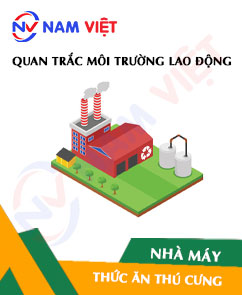
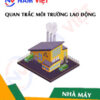
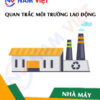
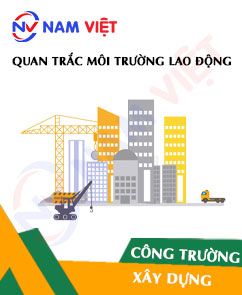



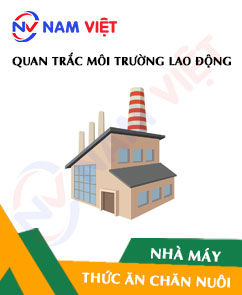

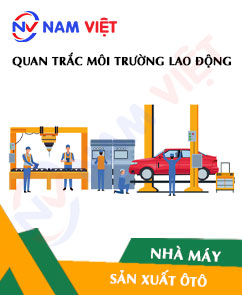
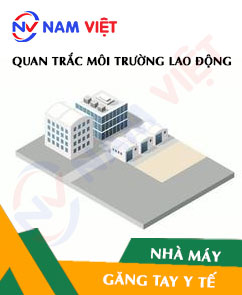
Review Occupational environment monitoring at a pet food manufacturing factory
There are no reviews yet.